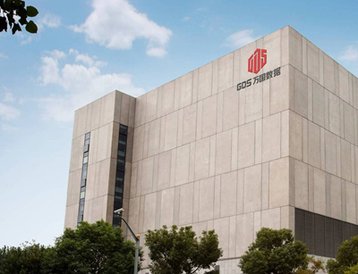GDS Holdings saw its revenues and losses grow in its Q2 earnings results as the company continues to rapidly expand across China.
The Chinese data center company saw revenues of RMB1.86 billion ($288.7 million), up 38.9 percent on Q2 2020. Net loss was RMB298.5 million ($46.2m) in the second quarter of 2021, compared to RMB101.0 million ($15m) in 2020. Adjusted EBITDA (non-GAAP) increased by 41.4 percent year on year to RMB895.9 million ($138.8m)
As with Q1, GDS was active on both the construction and acquisition front during the quarter. As well as bringing six data centers online and beginning construction on five more, the company also acquired two companies developing facilities in Beijing and Shenzen. The company is also expanding further into Hong Kong and developing a facility in Macau.
“We are pleased to report another quarter of solid business performance,” said William Huang, chairman and CEO of GDS. “During the second quarter, we added net additional area committed of over 44,000 sqm, including over 25,000 sqm of organic sales, maintaining our run rate.”
“We are delighted to win several first-time orders with new strategic hyperscale customers to further strengthen and diversify our customer base. On the resource side, we continued to scale up our supply by adding new capacity in Tier 1 markets which is always a key to success. Additionally, we took the first step in our regionalization plan to expand our platform to South East Asia, laying the groundwork for capturing incremental growth opportunities in one of the world’s fastest developing digital regions.”
The company had six data centers come online during the quarter: Two in Shanghai (SH12 and Phase 1 of SH17), three in Langfang (LF3, LF9, and LF10), and one in Beijing (BJ15) through acquisition.
The company closed two previously announced acquisitions; one in the Wuqing District of Tianjin (TJ1,) a 13,968 sqm facility expected to come into service in two phases during the second half of 2021 and first half of 2022); and the previously mentioned facility in Beijing (BJ15, 19,000 sqm).
The company also acquired a company developing a facility in the Bao’an District of Shenzhen, Guangdong Province (SZ8, 2,494 sqm and expected to come into service in the second half of 2021).
Another facility in Beijing is currently under construction on the same campus as BJ15 and due to come into service in the second half of 2021 (BJ16, 8,569 sqm and largely committed to a hyperscale customer);
As well as TJ1, SZ8, and BJ16, construction commenced on the SH17 Phase 2 in Shanghai (6,188 sqm) and CS2 in Changshu in Jiangsu Province (11,464 sqm built in three phases, 100 percent committed to a hyperscaler). All five facilities are due to have at least one phase of development complete before the end of the year.
In Beijing, GDS acquired a company that owns a data center campus in the city. The site is being developed into three data centers, with total floor area of approximately 10,700 sqm. Two data centers – BJ17 and BJ18 and totaling 3,700 sqm – are already in service and 100 percent committed to a new hyperscale customer. The third facility, BJ19, is already under construction; the 7,000 sqm facility is expected to come into service in the second half of 2022.
As well as the previously announced venture in Maylasia, the company also expanding in Macau and Hong Kong.
GDS has formed an 80:40 joint venture with a local partner to acquire a brownfield site close to the Zhuhai Hengqin Free Trade Zone in Macau for re-development into a 20MW, 7,600 sqm data center.
In Hong Kong, the company acquired an existing industrial building located in Kwai Chung it will redevelopment into a 7,200 sqm data center. The new facility, HK4, will be located close to the company’s existing facilities in the region and is expected to be delivered in 2025.
Chinese cloud providers mostly growing, still showing losses
Elsewhere in China, Alibaba’s cloud unit saw revenues of RMB16 billion ($2.486 bn) for the quarter, a 29 percent increase on Q2 2020. The company saw a net loss of RMB1.6 billion ($246m) and adjusted EBITA of RMB340 million ($52.4m). However, during this quarter the company reclassified its DingTalk business under the cloud unit.
As previously reported, Huawei’s revenues fell 29 percent to RMB320.4 billion ($49.56bn) with the company saying it was focused on "surviving the next five years" amid sanctions from the US.
Baidu doesn’t break out its revenues by specific unit, but said its non-online marketing revenue – including cloud and ‘other services’ – was RMB 5.0 billion ($771 million) for the quarter, up 80 percent year over year. Total revenues for Q2 were RMB 31.4 billion ($4.86 billion), up 20 percent on 2020. Net loss was RMB 583 million ($90 million), and Adjusted EBITDA was RMB 7.3 billion ($1.13 billion).
Tencent and 21Vianet are yet to publish their latest results.




